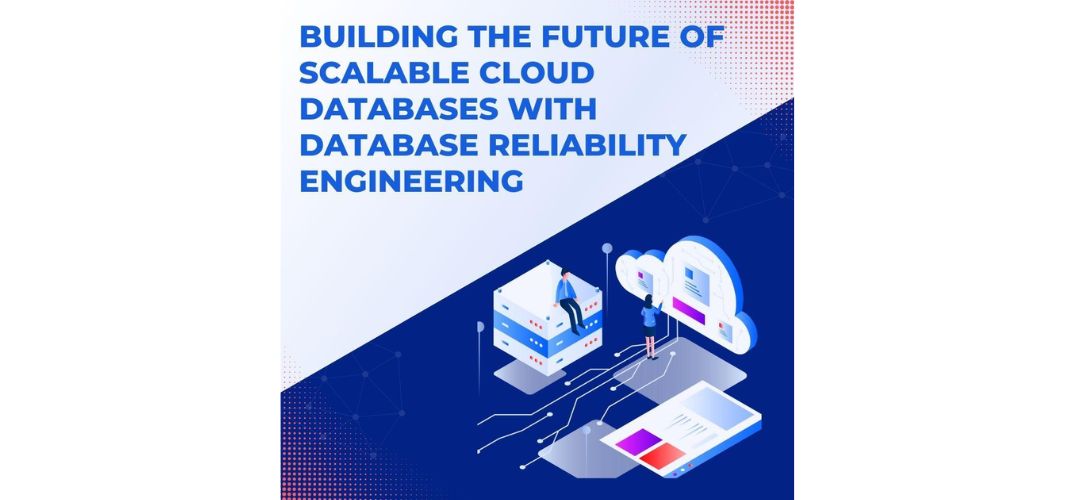Database Reliability Engineering (DBRE) is revolutionizing cloud database management, enabling enterprises to build scalable, reliable, and efficient systems. Shekhar Mishra, an expert in cloud infrastructure, explores how DBRE principles transform database operations, ensuring optimal performance, resilience, and cost-effectiveness.
The Shift to Cloud-Based Database Management
The digital era has fueled an exponential rise in data volumes, compelling organizations to migrate database operations to cloud environments. Traditional database management, constrained by hardware limitations, struggled to keep pace with surging data demands. The emergence of cloud-based DBRE practices has allowed enterprises to manage petabyte-scale datasets while ensuring performance consistency, even under dynamic workloads. With cloud databases now capable of handling up to 847,000 transactions per second, organizations can maintain efficiency without sacrificing reliability.
Elastic Scalability: Adapting to Variable Workloads
One of the fundamental innovations in cloud database engineering is elastic scalability. Unlike rigid on-premises systems, cloud-native architectures dynamically adjust resources based on demand. By integrating automated scaling techniques, organizations reduce system downtime by 47% and optimize query performance by 68%. Elastic scaling allows databases to expand seamlessly during peak usage and scale down to conserve resources, minimizing operational costs while ensuring uninterrupted service.
Serverless Databases: The Next Evolution in Cloud Computing
Serverless architectures have emerged as a game-changer in database management. Unlike traditional models requiring pre-allocated infrastructure, serverless databases automatically provision resources as needed. This approach reduces latency by 65% and ensures cost efficiency, as organizations only pay for actual usage. Serverless frameworks process thousands of concurrent requests with sub-10-millisecond response times, making them ideal for modern high-speed applications.
Automation and Infrastructure as Code (IaC)
Automation plays a crucial role in modern DBRE strategies. Infrastructure as Code (IaC) eliminates manual configuration errors and streamlines deployments. Research indicates that IaC reduces system configuration inconsistencies by 82% and cuts deployment cycles from 72 hours to just 4.5 hours. Automated backup and disaster recovery mechanisms further enhance database resilience, ensuring a recovery time objective (RTO) of minutes rather than hours.
Enhancing Performance Through Advanced Monitoring
Performance optimization is a cornerstone of DBRE, with monitoring solutions providing real-time insights into database health. Advanced monitoring systems track over 150 performance metrics, using machine learning to predict failures before they occur. Organizations leveraging predictive monitoring achieve mean query response times of 8.5 milliseconds, compared to 47 milliseconds in traditional setups. This proactive approach minimizes downtime and improves user experience.
Managing Global Data Distribution and Consistency
Modern enterprises operate globally, requiring distributed databases that ensure data consistency across multiple regions. Cloud-native replication strategies synchronize datasets across geographic locations with latencies as low as 50 milliseconds. Advanced sharding techniques allow organizations to distribute data intelligently, optimizing read and write operations. These innovations enable businesses to maintain low-latency access to mission-critical information worldwide.
Security and Compliance in Cloud Databases
As cloud databases scale, security and compliance become increasingly complex. Implementing automated security policies, including encryption and access controls, significantly reduces unauthorized access attempts. Role-based access control (RBAC) systems process thousands of authentication requests per second, ensuring that sensitive data remains protected. Automated security audits further enhance compliance, detecting vulnerabilities with 78% greater accuracy than manual audits.
The Road Ahead for Database Reliability Engineering
As cloud technologies advance, the role of Database Reliability Engineering will expand to include intelligent workload balancing, real-time anomaly detection, and self-healing architectures. Businesses will increasingly adopt AI-powered database management tools, allowing predictive resource allocation and autonomous tuning to maximize efficiency while reducing operational overhead. These enhancements will redefine performance benchmarks and reliability expectations.
The evolution of DBRE will continue to shape the future of cloud database management. AI-driven optimization, predictive scaling, and serverless expansion will drive the next phase of innovation. As enterprises demand higher availability, lower costs, and improved performance, DBRE methodologies will remain essential for achieving these objectives.
In Conclusion, Shekhar Mishra highlights the transformative impact of DBRE on cloud database management. As cloud adoption accelerates, organizations that leverage DBRE principles will gain a competitive edge through enhanced reliability and efficiency. Through automation, scalability, and performance optimization, enterprises can build resilient, high-performance database infrastructures that meet the demands of the digital age.



































